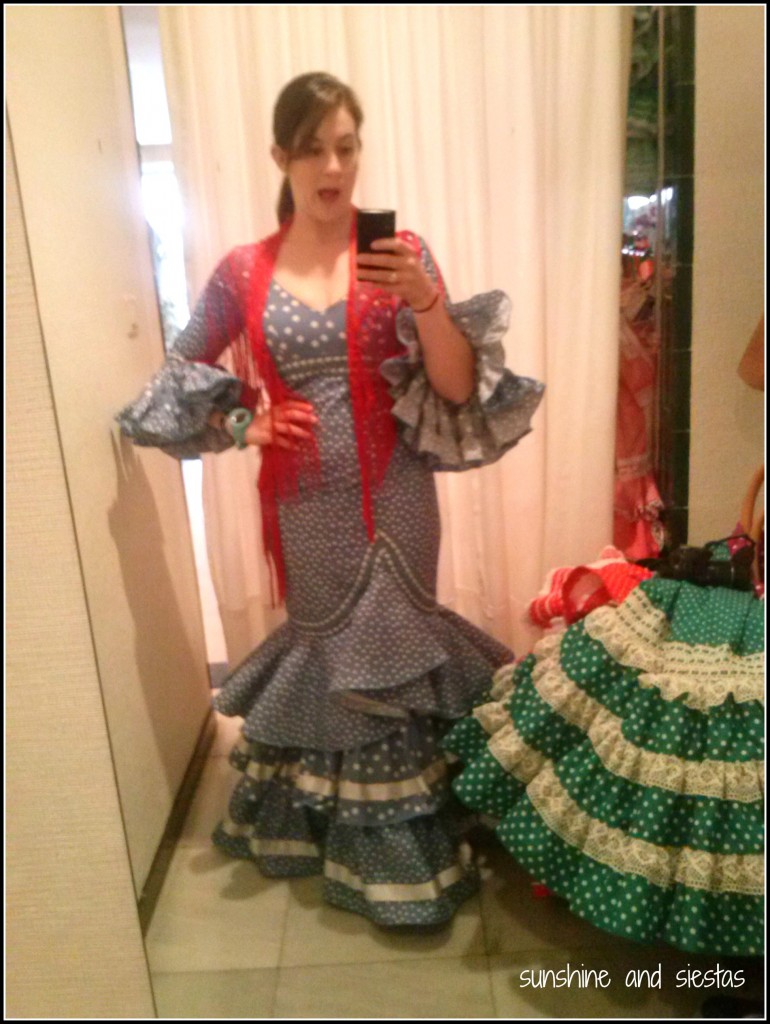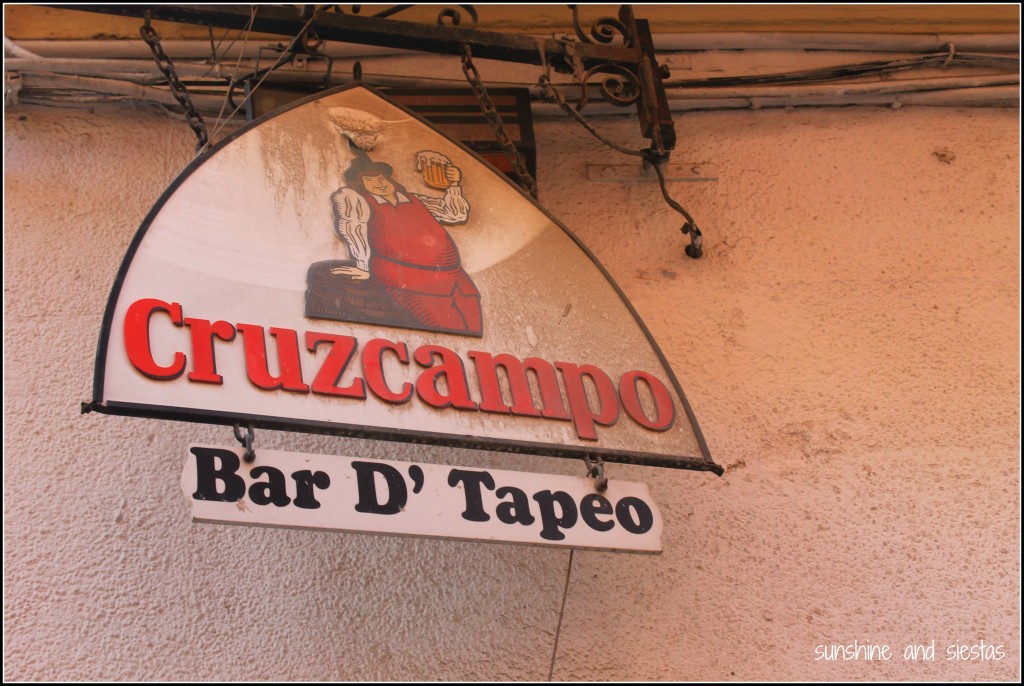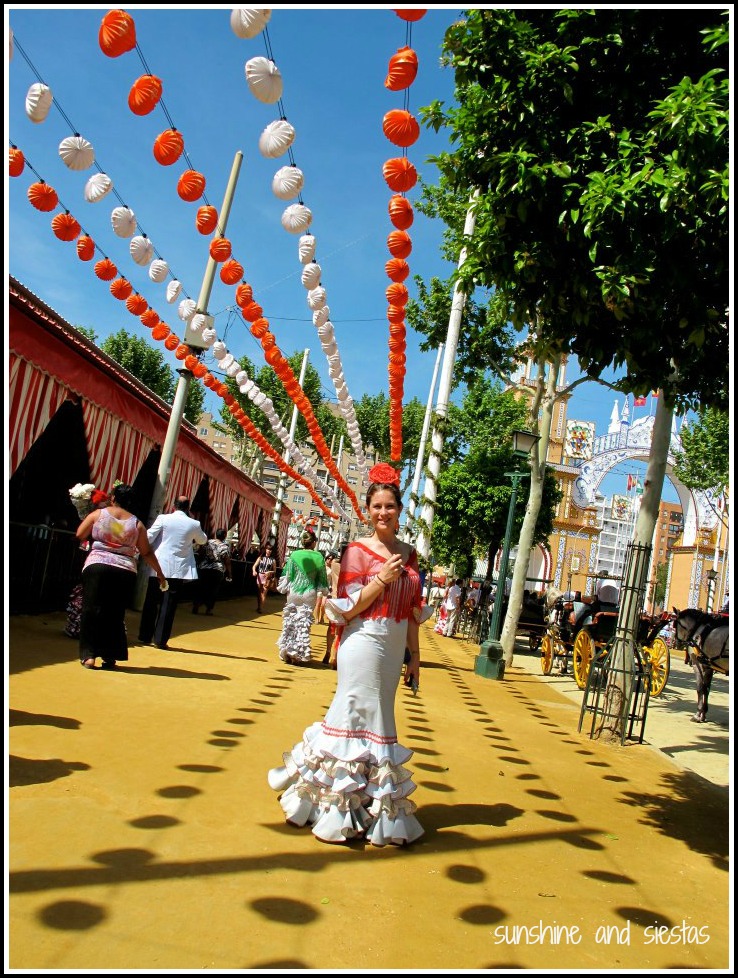For me, moving to Spain in September 2007 was a baby step into a life abroad. I had studied abroad here, aced all but one of my college Spanish courses and was open to the experience of living abroad in Sevilla and making it work, no matter how homesick I got for my family, English language TV and Cheez-its.
Baby steps. This would be easy.
Well, “this would be easy” was my mindset before I actually got here and realized I had no idea how to adult, let alone how to adult in another language and country where long lines, 902 numbers and being subject to the mood of whoever was attending you became a daily reality.
My first year in Spain was equal parts new discoveries and new headaches, learning the language and learning how to cope with, um, Spain in general. The second year was easier, logistics-wise, but I wrestled with whether or not I wanted to stay in Spain any longer or return to the US. The learning curve was still steep and continues to be as I propose new professional goals and look forward to becoming a mamá for the first time. Even as life in Spain gets easier, I sympathize with new expats who are mostly clueless. We are all @GuiriBS.
That was me one balmy September in 2007. While there are loads of small skills you learn after a bit of time (like that those clunky 2€ coins actually are worth something and how to walk right through a wall of unwanted piropos), but some are a bit more savvy and take time time to refine.
To celebrate my ninth Spaniversary of living in Spain, every expat should know these nine hacks:
How to convert to the Metric System
“Ojú, 40 grados mañana.”
Why even download a weather app when your husband is addicted to the telediario every afternoon at 3:25pm? I don’t know the exact temperature in 40 Celcius is in Farenheit… just really, really warm.
If you’re an American (or, for that matter, from Myanmar or Liberia) abroad, you’re probably clueless about how to convert the Metric System into the other measurement system. I’m still learning and perfecting my memory tricks (my math skills can’t divide and then add any faster than my phone apps), but here’s how I’ve learned:
The temprature. 10 degrees is cold, 30 degrees is uncomfortably hot, and 25 degrees is – Goldilocks style – juuuuust right. I usually remember that 25 degrees is a nice 77°.
Weight and Height. I have snowboarded since I was a kid, and the because the measurements come in centimeters, rather than feet and inches, I simply add 20 centimeters onto the snowboard’s length when asked for my height. As for weight? I oscillate between 60 and 62, and prefer that low number to my weight in pounds.
The problem? Electronics come in inches, called pulgadas. Or, maybe that’s not an issue for you.
Liquids. Still working on this one, especially when the gas prices read 1.02€ for diesel but filling up my car, Pequeño Monty, costs more than I spend on insurance, bike repairs and a metro pass, combined.
Speed and distance. I worked exactly ten miles away from Sevilla during my first years as a language assistant. While I sat on a bus and read, my coworker biked the 16 kilometers to the school. Now that I drive, 120 kilometers on the highway (the speed limit on freeways) means an hour, which has become my marker.
So I round numbers up and down a bit, ok?
How to buy European clothing sizes
Differences in length and height and width means that shopping became an adventure, too. And don’t forget that not all European sizes are different – Italy, the UK and the rest of Europe have slight differences, evident by several numbers on the size tag. My biggest complaint has been that most jeans are far too long for my shrimpy legs, which makes zero sense since Spanish women, on the whole, are shorter than me.
Finding your sizes in Europe takes a great deal of trying on, discarding and ignoring the tags. What is a dress or pants size 8 in America could be a M and anywhere between a 38 and 42 in Spain (and that’s not taking length into account), whereas a shirt at Zara that’s a medium may need to be a large at Lefties – and they’re the same company.
En fin.
Shoes are an entirely different story – and an easier one! I wear a size 8 in the US, which is a clavado 39. My only problem is that I am useless in heels.
The only great equalizer in the Spanish fashion world is the traje de gitana. You are a size 40, trust me.
How to travel around Spain
I inherited my dad’s love of beer, healthy doses of adventure and his nose. He also passed along his intrinsic skill of budget travel, and even though I’ve moved out of the phase in my life where overnight buses and questionable hostel beds are acceptable, so long as they’re in the sake of traveling further, and I’ve seen a good chunk of Europe thanks to it.
Spain is full of cool things to see, do and experience, from tomato slinging festivals to jaw-dropping road trips to hidden beaches and charming small towns. Unless you have a car (and enough money to cover the liters of gas… see above), you’re got to stick to public transportation or ride shares.
Thankfully, traveling around Spain can be done on the cheap. To fully take advantage, check out Bla Bla Car for ride sharing (or share your trip – I took three others to Valencia for Fallas and had the gas paid for), sign up for budget airline newsletters for special offers and loyalty programs and buy your RENFE train tickets three months in advance or share a table of four.
You can also take advantage of long weekends – nearly one a month! – and local holidays to maximize your time to be desconectado. And don’t shrug off places that are a bit tougher to get to, as those are usually the places with encanto.
How to speak a bit of Spanish
When my parents first came to visit me over the Christmas holidays, they begged me to order food for them. I’d been pinching the euros of my measly paycheck by subsiding off of frozen pizzas and spaghetti and could barely recommend a nice place to eat, let alone dissect a menu. It was a lot of, “I think that’s fish” and, “It’s a pig part that you probably won’t like” to a family that eats with their eyes.
That was the turning point for me – I told my new boyfriend that he’d have to start speaking to me in Spanish, and despite the frustrations and tears and utter confusion with andalú, I consider learning Spanish to be one of my proudest achievements.
There’s no need to be fluent after nine years, but I firmly believe that knowing Spanish makes life in Spain richer. It’s easier to interact with locals, particularly outside of cities, and there’s a wealth of cultural nuances that I’ve learned and come to love because of it.
People often ask me how to learn Spanish, and I wish I had an easy answer. Mine was a healthy dose of not caring about making mistakes, talking to anyone who would listen, reading books and noting down new words and expressions and calming my nerves with a few cervecitas. You could also try signing up for classes – I liked my audited classes at Sevilla Habla a lot – or apps, and the Ultimate Spanish Practice and Review was my Bible for months, but nothing beats swapping stories with an abuelito at your corner bar.
How to do a reclamación
You haven’t really lived in Spain until you’ve logged an official complaint. You know all of those signs in restaurants, shops and pharmacies that say “Queda a la disposición un libro de reclamaciones” or something to that effect?
The first time I ever suggested using it was when I felt a friend had been treated poorly at a public hospital. The nurse who had effectively called her an irresponsible harlot was disciplined, and I soon found out that making a formal complaint is often synonymous with getting ‘er done. Bad service at a restaurant means I’ll refuse the offer of a free meal in favor of letting the boss know a waiter has been snide (as if never going back weren’t punishment enough), and the Novio even once got 12€ from Bricomart after they sold him two faulty ceiling fans.
The best I’ve ever done is two in a span of 12 hours – the first over the phone when the energy company Iberdrola decided we had an emergency to fix at midnight and promptly began drilling when I was fast asleep, then the following morning at my health clinic for terrible service after being told here were no doctors in the month of August because babies weren’t born in August (I showed my TIE card as proof that, yes, babies come during the Pan-European vacation month, too).
But I don’t do it to prove a point or because I’m a demanding customer: when my family’s bags were lost last Christmas and ended up in Phoenix instead of Sevilla, I asked them to be sent to my house via courier. I was informed that Iberia didn’t have a courier to take them to my house, and the customer service rep urged me to fill out a reclamación form so that the company would realize the importance of the service. I fill out reclamaciones so that everyone else can benefit from better services.
How to deal with things back home
It’s now easier than ever to stay in touch with loved ones back home, despite the time difference, but what about all of the extras? The money matters, bills, sending packages and prescriptions? Though I’ve gradually let go of many of those things (just not Cheez-its), I can’t bring myself to uproot entirely, even at risk of FACTA sanctions and double taxation.

The USA seemed even further across the Atlantic than it does now. Thanks to online everything, I can move money or order English language books for cheap; when I came to Spain in 2007, I was barely toeing the line of calling myself a resident of Spain – I saw nine months as a brief foray into expat life, so I got a year’s prescription of my pills, pared down my shoes and sweaters and even traveled northern Europe without a jacket because, why waste valuable suitcase space? My biggest complaints in those early days was not being able to EuroHack or sometimes cope with a lack of American products.
And there were little things – an American style measuring cup, my deodorant and gym shoes that didn’t cost a week’s worth of private class hustle.
Nine years on, I only own a few American-bought appliances and clothing items, and I’ve found ways to just toe the line of American life. But more than that, I’ve had to take many of my “adult” things online, especially credit card payments, sending money abroad cheaply, banking and maintaining our savings accounts in an American bank. Make sure that you especially know how to keep your phone number, deal with money and credit card or mortgage payments, and take care of all of your issues at home.
And, no matter what a Spaniard says, sending thank you notes or greeting cards never goes out of style (and I always have a stock!). Plus, Madrid is a mecca of American everything – original version films, American brands and even a Five Guys and a Steak n’ Shake. Our British counterparts have Boots pharmacies and Dealz, a version of Pounds. Globalization isn’t always a bad thing, but when you’re majorly homesick…?
How to deal with red tape
Seville’s Plaza de España is the first place I lusted after in Sevilla. It’s regal and striking, particularly at sunset.
But at sunrise when you’re lining up for a residency card petition? The colonnades and the moat lose their sheen – believe me. Spaniards invented reed tape, and while I’m sure it doesn’t compare to Italy or the US, it’s a necessary headache as an expat in Spain, me temo. It’s inefficient and slow, prompting the famous line, las cosas del palacio van despacio. And if you’re non-EU, the process becomes even further clotted by translations, notarizations and multiple appointments.
By the time this video was passed around expat groups, I’d already formulated my extranjería hack skills and there were significant improvements in the way that many steps, such as an appointment system and online status checking, could be handled. But it’s not just the foreigner’s office that operates on its own scheduled – the Novio is a government worker and often has his paychecks come late, and let’s not forget the first time I applied for unemployment, when a worker was literally napping on her desk. Fear not, fellow guiris – even the locals are victims.
My tips: bring five photocopies of each, arrive after coffee and be extra friendly. I once made friends with a frowny face worker in the Hacienda office by asking about his Betis ashtray. Ever since I stopped rolling my eyes and learned to change my attitude (and bring a book), it’s been easier to deal with the lines, the wait times and the mechanical responses from the civil servants. And Plaza de España is now beautiful again.
But I still think that the autorización de regreso is a scam to earn 13€ while the extranjería takes its sweet time in issuing your residency card renewal.
How to cope when your friends leave
Back in the days when Spain was but a brief life interlude, I never turned down an invitation out for tapas or a drink, and found myself adding Facebook friends left and right – it was the adult equivalent of leaving your dorm room door open, after all. Even when homesickness threatened to have me retreat to my piso with a box of Magnum Minis, it was easy to give someone a toque and meet them at the corner bar for a coffee.
The following year, the Novio was sent abroad to work for two months, right after we’d spent the whole summer apart. I nearly forgot the sound of his voice and was nervous that I’d plunge right back into the Magnum mini binge. So, I forced myself to make new friends, and to try and invert my time into friends who will be sticking around for the long-term. There’s always a cycle – people come and go, and this is a hallmark of expat life.
This doesn’t mean it’s easy.
Friends leaving is HARD, and my merry little band of guiri girlfriends in Seville went from six to three in the span of two months. Two friends that I made early on left the country – one for the US and the other for Indonesia – right when I was packing up for Madrid. And they’re not the only ones. My Sevilla dream team spans these nine years, from the one who adopted me as her wing woman and promptly introduced me to the Novio, to the one born in the wrong country whose musings on sevillano life, four years after leaving, reach straight to my heart. And who could forget the night we all bought matching underwear from a vending machine after rapping Eminem?
I miss those faces and our antics all the time, and I’m not sure I’ve completely superado this slice of expat life.
What helps me cope is knowing that every single one of them has made the decision that was best in that moment, and that Sevilla will always be ours.
How to grin and bear it
The successful marketing campaign, “Spain is different,” is oft repeated by Spaniards and guiris alike. It’s true – many things in Spain seem to function without any rhyme or reason, and I’m still taken aback by the clash of the vanguard and the antiquated often.
Spain is, indeed, different, and not all places in Spain are created the same. Perhaps that’s why I love it so much, and why my visitors love it on the surface, too. For all of the headaches and eye rolls and “I HATE SPAIN” days, I feel challenged, mostly fulfilled and like I ended up in a country that has welcomed me with dos besos and a squeeze on the shoulders. I have learned to grin and bear it and love it, despite its faults and my desperation, at times.
Nine years ago this September, I got off a plane and stepped into a world where Spanish was my language weapon and every day presented a new desafío, from figuring out how to navigate a bus system to conquering the crippling bureaucratic maze to remembering why and for whom I came in the first place.
Who knows where we’ll be in a few years. With the first of likely several babies on the way and the Novio with ganas to have his own adventure abroad, I may not have many Spaniversaries left. But pase lo que pase, every September 13th is a special day for me when I remember how good Spain has been to me. And it extends far beyond the riqueza of the lifestyle – I sappily believe that this place has shaped me in a positive way. I’m excited to raise a family here and to continue being surprised by what Spain offers.
And if the first nine years is any indication, my 30s is going to be a pretty awesome decade, too!
If you’ve lived abroad before, would you add anything to this list? Please share in the comments below!
I’ve included my affiliate link for Transferwise, a safe way to send money from abroad, in my post. I get a small commission if you use it, but I wouldn’t link it if I didn’t use it and love it myself! The money I earn from this blog helps maintain the site, and I appreciate your collaboration!






















